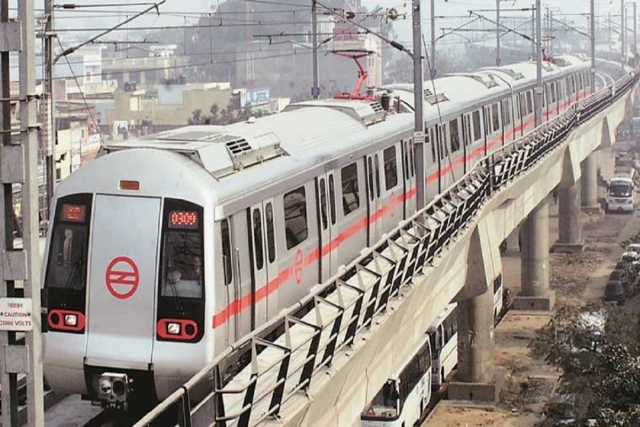Infrastructure
Delhi Metro Charts Course for Enhanced Connectivity: DMRC To Offer Interchange At 48 Stations
- Currently spanning 391 km with 29 interchange stations, the Delhi Metro is poised to grow by 65 km through phase 4 expansion.

The Delhi Metro (represetative Photo)
In a significant move aimed at enhancing connectivity within the city, the Union cabinet has given the green light to two new Delhi Metro corridors as part of the phase 4 expansion.
This imperative development will elevate the number of interchange stations across the network to 48, with the count of triple interchange stations, connecting three metro lines, increasing to four.
Currently spanning 391 km with 29 interchange stations, the Delhi Metro is poised to grow by 65+ km through phase 4 expansion.
The new corridors from Lajpat Nagar to Saket G-Block and Inderlok to Indraprastha will add another 20.7 km to the network. This expansion aims to alleviate congestion at major interchange hubs like Rajiv Chowk and Kashmere Gate by dispersing passenger traffic to additional interchange facilities.
For instance, the Lajpat Nagar station, presently linking the Pink and Violet lines, will now connect with the new Lajpat Nagar to Saket G-Block corridor. Similarly, the New Delhi station, facilitating travel between the Yellow Line and Airport Express Line, will also integrate with the expanded Green Line.
This move is geared towards enhancing accessibility and reducing travel times on India's largest metro rail network. As per a 2011 strategy, Delhi Metro Rail Corporation (DMRC) initiated a key plan to cut down congestion at Kashmere Gate and Rajiv Chowk, yielding positive results, as indicated by data from 2023, reports Financial Express.
Following the phase 3 expansion, busy interchange stations such as Kashmere Gate and Rajiv Chowk experienced reduced footfall. Kashmere Gate witnessed a 12.9 per cent decrease in footfall between September 2019 and September 2023, while Rajiv Chowk recorded an 18.3 per cent drop during the same period.
The approval of these two corridors is expected to not only enhance connectivity but also streamline commuter journeys, minimising the need for lengthy detours.
Support Swarajya's 50 Ground Reports Project & Sponsor A Story
Every general election Swarajya does a 50 ground reports project.
Aimed only at serious readers and those who appreciate the nuances of political undercurrents, the project provides a sense of India's electoral landscape. As you know, these reports are produced after considerable investment of travel, time and effort on the ground.
This time too we've kicked off the project in style and have covered over 30 constituencies already. If you're someone who appreciates such work and have enjoyed our coverage please consider sponsoring a ground report for just Rs 2999 to Rs 19,999 - it goes a long way in helping us produce more quality reportage.
You can also back this project by becoming a subscriber for as little as Rs 999 - so do click on this links and choose a plan that suits you and back us.
Click below to contribute.
Latest